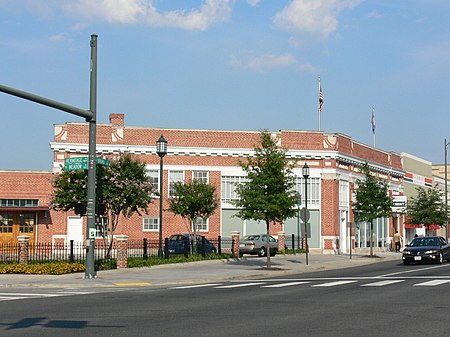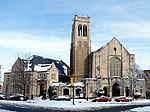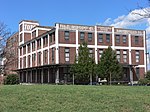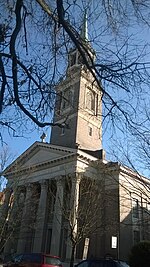Atlantic Motor Company
Auto dealerships on the National Register of Historic PlacesBuildings and structures in Richmond, VirginiaCommercial buildings completed in 1919Gas stations on the National Register of Historic Places in VirginiaNational Register of Historic Places in Richmond, Virginia ... and 2 more
Neoclassical architecture in VirginiaRichmond, Virginia Registered Historic Place stubs

Atlantic Motor Company is a historic automobile showroom and gas station constructed in 1919 in Richmond, Virginia. The building was designed by Richmond architect Albert F. Huntt with Bascomb J. Rowlett. It was added to the National Register of Historic Places on November 16, 2005. It is located at 1840 West Broad Street. The building was empty for two decades until being converted into retail space and offices after 2004 with the support of tax credits.
Excerpt from the Wikipedia article Atlantic Motor Company (License: CC BY-SA 3.0, Authors, Images).Atlantic Motor Company
West Broad Street, Richmond The Fan
Geographical coordinates (GPS) Address Nearby Places Show on map
Geographical coordinates (GPS)
| Latitude | Longitude |
|---|---|
| N 37.55676 ° | E -77.45996 ° |
Address
West Broad Street 1840
23220 Richmond, The Fan
Virginia, United States
Open on Google Maps








